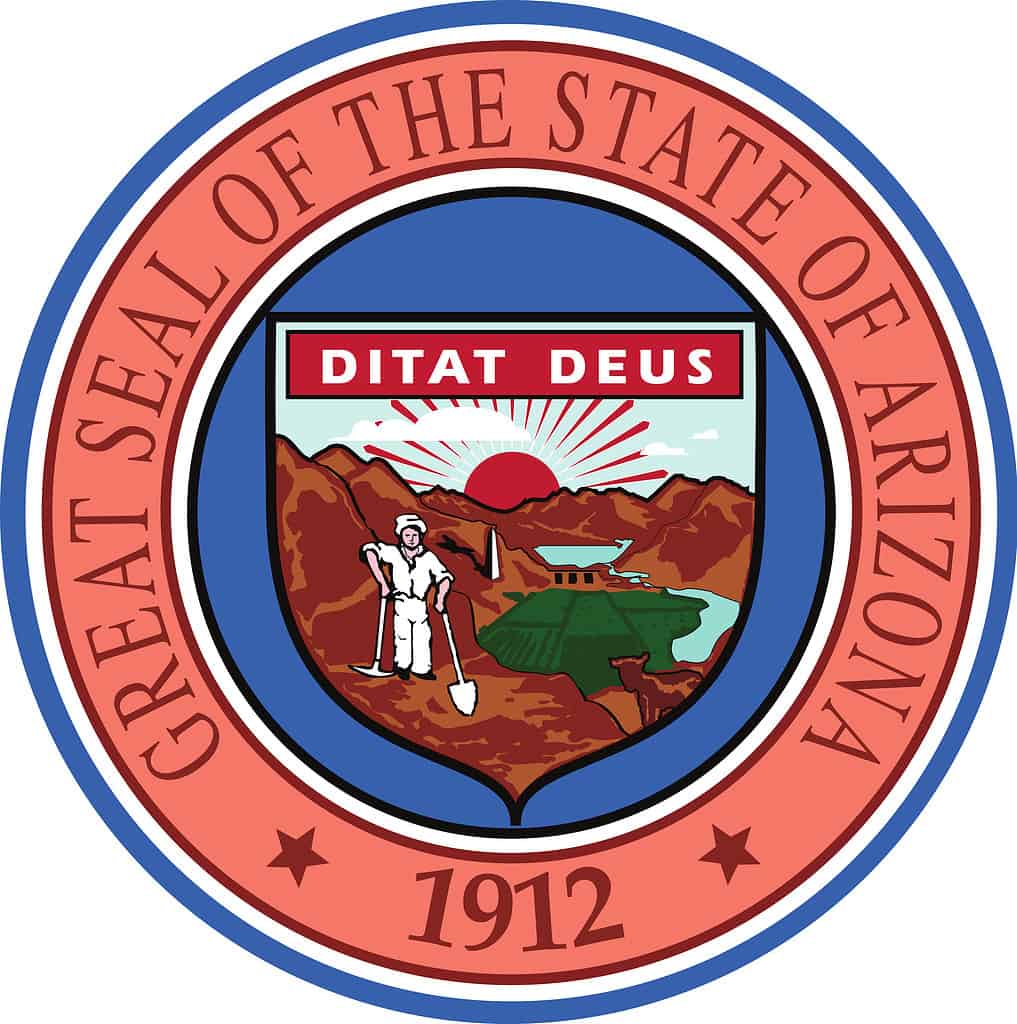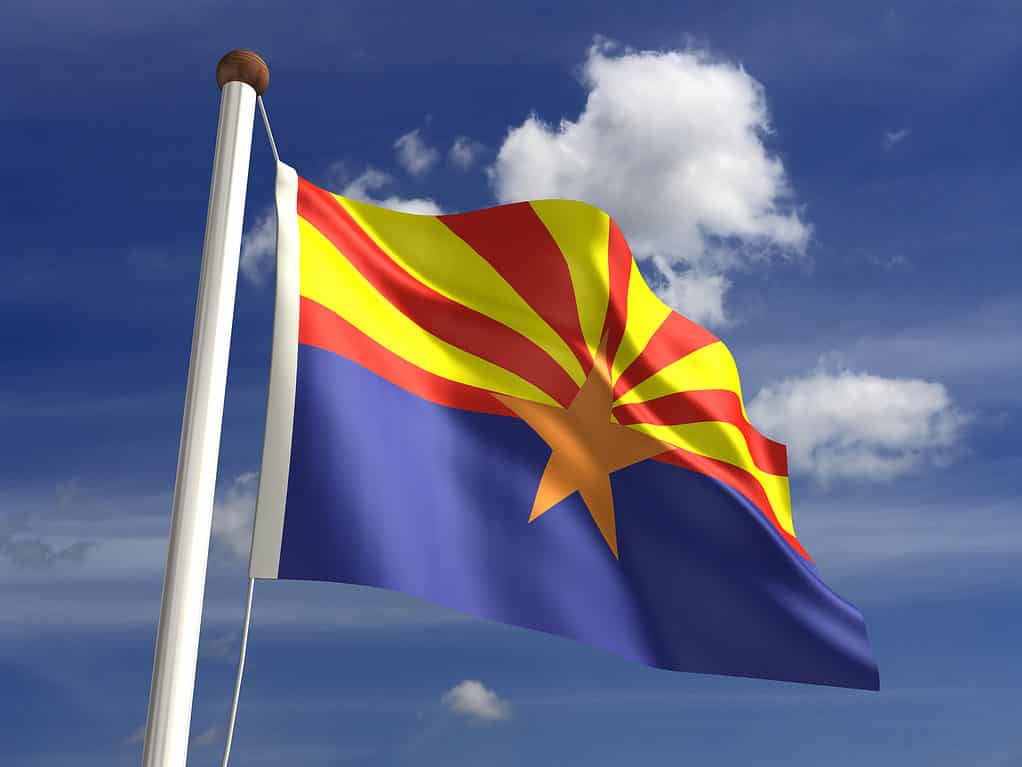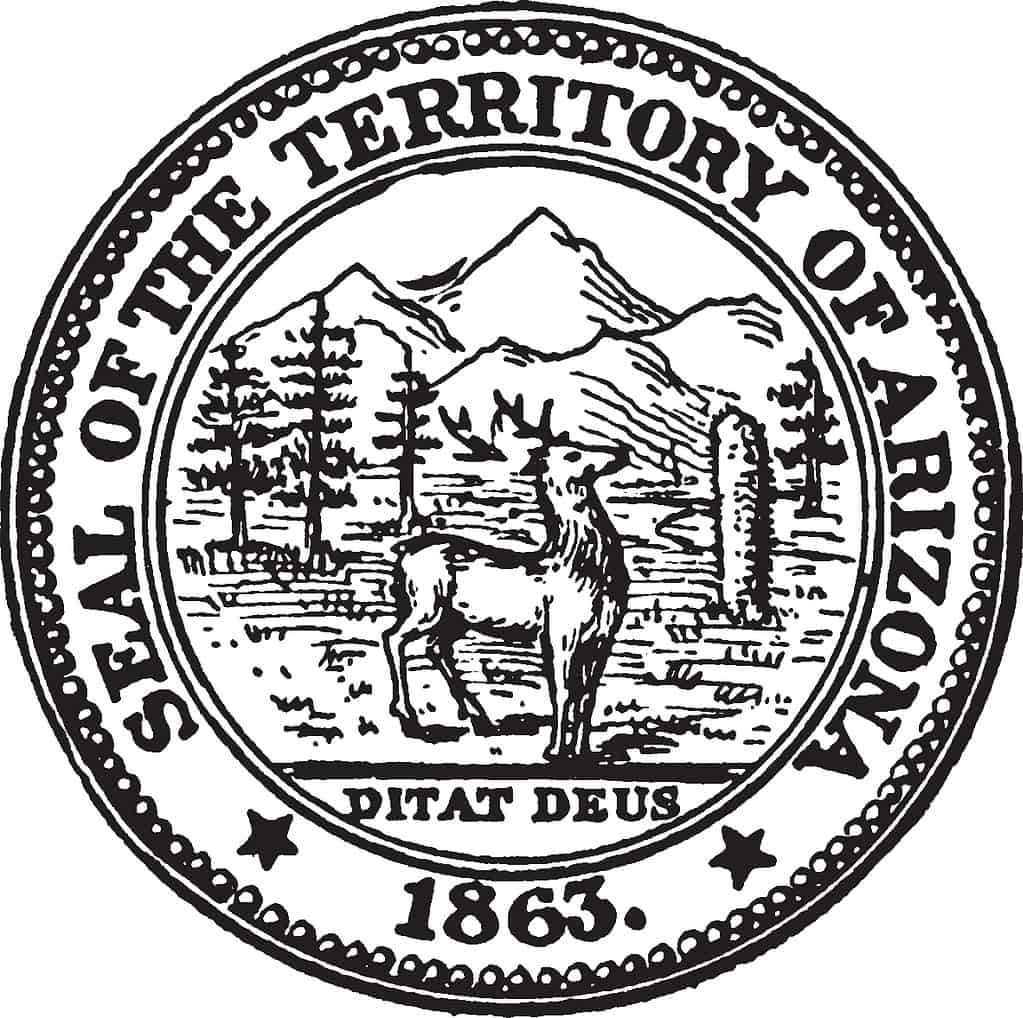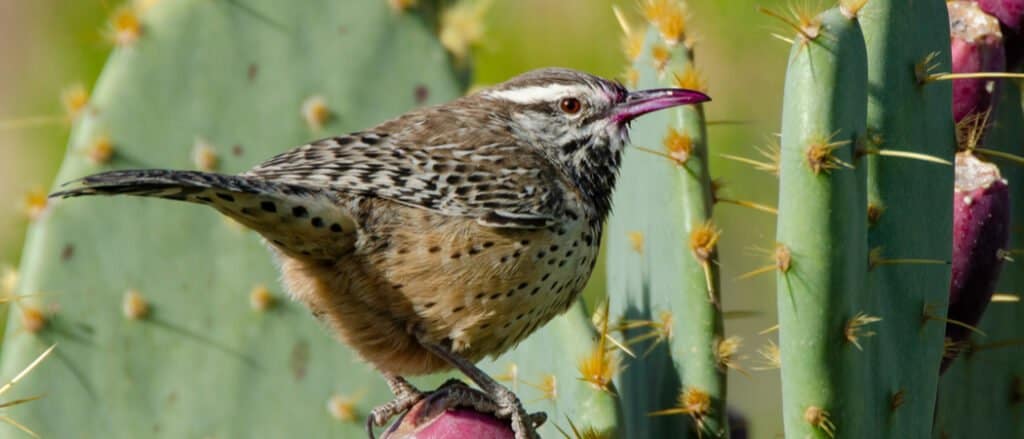When you think of Arizona, what comes to mind? For many, the Grand Canyon is the immediate image, with turquoise and silver jewelry, dinosaurs, the Hoover Dam, Saguaro cacti, and the desert close behind. All of these iconic elements of the state’s unique beauty and history are just a part of what fueled the creation of the Arizona State Seal.
A Brief History of Arizona

The Arizona state seal
©ExpertOutfit/Shutterstock.com
Encompassing Paleo-Indian, Archaic, Post-Archaic, Spanish, Mexican, and American periods, the history of Arizona is rich with incredible diversity. Originally settled sometime between 10,000 and 12,000 years ago by Paleo-Indians, the area eventually became home to the Ancestral Puebloan, Mogollon, Hohokam, and Sinagua peoples. None of these people still exist, having disappeared mysteriously, according to many, during the 15th and 16th centuries. Speculations about the “disappearance” range anywhere from invaders to the groups simply moving to other areas. The ruins left behind by these people groups are still present around much of the state of Arizona.
With a small population at the time, Arizona was part of the state of Sonora, Mexico, from 1822. Then, in 1848, the Mexican Cession occurred and the United States took possession of the land after the Mexican War. At that time, Arizona was part of the Territory of New Mexico. The Gadsden Purchase in 1854 secured the northern part of Sonora, bringing into American possession the rest of the state’s land. In 1863, the Arizona Territory was formed and eventually became a state in 1912.
Arizona State Overview

The Arizona state flag heavily features symbols representing the Great State of Arizona – but does not include the state seal.
©iStock.com/selensergen
Arizona became the 28th state of the United States of America, in 1912. As the sixth largest state, in terms of land mass, the population is relatively small for its size, at only 2.72 million people. Most folks in Arizona live in urban and suburban areas, largely due to the unforgiving terrain of the desert lands that make up much of the state. You see this represented heavily in the chosen symbols of the state, including in the state bird and flower, both associated with cacti, a plant of the desert.
The Arizona Seal: Imagery
Represented in the Seal of Arizona, the main attractions and enterprises of the state are evident. The glorious beauty of the natural world may be found in the sun rising behind the mountain range of the background. A water reservoir and dam, irrigated fields and orchards, and cattle represent the agricultural aspects of the state. Mining imagery also grace the image, demonstrating some of the major industries of the state, including both copper and quartz mining.
The Arizona Seal: State Motto
Situated at the top of the crest of the Arizona state seal, two words pop: “Ditat Deus.” The literal translation from the original Latin is “God enriches.” Some have expressed curiosity over the state’s choice of Latin motto, rather than Spanish or English usage, based on the state’s history and cultural bridges.
While the state seal has changed over time, the motto has remained the same since it was adopted in 1863, when the area became an official territory. A publisher and politician, Richard Cunningham McCormick is credited with coining the motto while serving as the first secretary of the Arizona Territory and later becoming the second governor.
In the 1800s, when the state was formed, Latin was the primary language taught, apart from English, and many would have been familiar with the phrases used as mottos at this time. Suggestions propose that the Latin phrase is based in Genesis 14:23, when the Hebraic patriarch Abram turned down an offer of help from the king of Sodom, saying instead that he would do with the blessings of God – a God who enriches.
Along with Arizona, three other states directly reference God in their motto: Florida, South Dakota, and Ohio.
Arizona State Seal: Design

One of the earlier versions of the Arizona Territory seal.
©Morphart Creation/Shutterstock.com
As the base and background of the Arizona State Seal, mountains etch the horizon, with a sunrise at the peaks. To the right side, a water storage reservoir and dam appear, with irrigated fields and orchards in the middle distance to foreground, representing a major part of the state’s economy which many folks don’t think about (agriculture, specifically cotton and citrus). Though it blends in, a cattle beast rests in the lower right-hand corner of the seal. A miner with pickax and shovel appears, with a quartz mill behind representing both quartz and copper mining, while at the bottom rests the year the state was admitted into the union (1912), and the motto graces the top of the crest: Ditat Deus.
The miner on the seal isn’t just any person, it should be noted. The man represented is George Warren, who held the original mining claim in Bisbee, Arizona, back in 1877. Each of the other components of the seal represent some aspect of the culture, history, or economy of the state.
History of the Seal
In 1863, approval from President Abraham Lincoln allowed the Territory of Arizona to form with a temporary government in place. Because of this, Richard McCormick, a former journalist and businessman, was appointed by the President as the territory’s secretary. McCormick determined that an official seal would be needed for official documents, and so he designed a seal and brought it with him when he moved west to take on the role.
The original artwork of the seal contained two bare mountains in the background, with a bearded miner in the foreground, with a wheelbarrow, pick, and spade. Even at that time, the seal had the remaining motto of “Ditat Deus.” Some thought the seal was cartoonish looking, and so McCormick took some heat for the design, resulting in a redesign and multiple debates over it in official settings. In 1910, just two years before the territory became a state, the territorial seal was altered. More alterations were made throughout the seal’s lifetime. Now, the “official” Arizona State Seal stands, designed by Phoenix newspaper artist, E.E. Motter, accepted in 1911, soon before the territory became a state. This adopted design contains elements of the original seal that has gone through multiple alterations and eventual deteriorations.
For a detailed history of the seal, visit the Arizona Government official website.
Other Symbols and Emblems of the Great State of Arizona

The Cactus wren is the official state bird of the Great State of Arizona.
©Sean R. Stubben/Shutterstock.com
Many adopted symbols and emblems help to represent the beautiful state of Arizona.
- State flag, containing no seal but rather 13 rays of red and gold, representing the original 13 American colonies as well as representing the state’s magnificent sunsets. At the center is a copper-colored star representing the state’s copper mining industry, and blue as the background of flag, symbolizing liberty. Adopted in 1917.
- Nickname: The Grand Canyon State
- State flower: Saguaro Cactus blossom, adopted 1931
- State tree: Palo verde, adopted 1954
- State amphibian: Arizona tree frog, adopted 1986
- State bird: Cactus wren, adopted 1973
- State butterfly: Two-tailed swallowtail, adopted 2001
- State dinosaur: Sonorasaurus, adopted 2018
- State fish: Apache trout, adopted 1986
- State mammal: Ring-tailed cat, adopted 1986
- State reptile: Arizona ridge-nosed rattlesnake, adopted 1986
- State gemstone: turquoise, adopted 1974
- State metal: Copper, adopted 2015
- State drink: Lemonade, adopted 2019
Some of the Most Common Animals Spotted in the Wild in Arizona

An unusual creature spotted in Arizona: the
Gila monster
.
©Vaclav Sebek/Shutterstock.com
Arizona is known for many things, but two of the main reasons come to visit the great state are both nature-centered: hiking and outdoor sports and wildlife observation. From hiking down into the Grand Canyon to white water rafting, the great outdoors draws literal tens of millions of tourists every year into the 48th State of the Union. While out and about, you may have the chance to spot some of the most intriguing wildlife in the country, as well, including:
- Gila monsters (lizards)
- Javelina (pig-like mammal)
- Coues whitetail deer
- Mule deer
- Black bear
- Coyotes
- Coatimundi (similar looking to monkeys)
- Raccoons
- Skunks
- Chuckwallas (lizards)
- Red-spotted toads
- Western diamondback rattlesnakes
- Greater roadrunner
- Great blue herons
- Cactus wrens (state bird)
The photo featured at the top of this post is © ExpertOutfit/Shutterstock.com
Thank you for reading! Have some feedback for us? Contact the AZ Animals editorial team.






